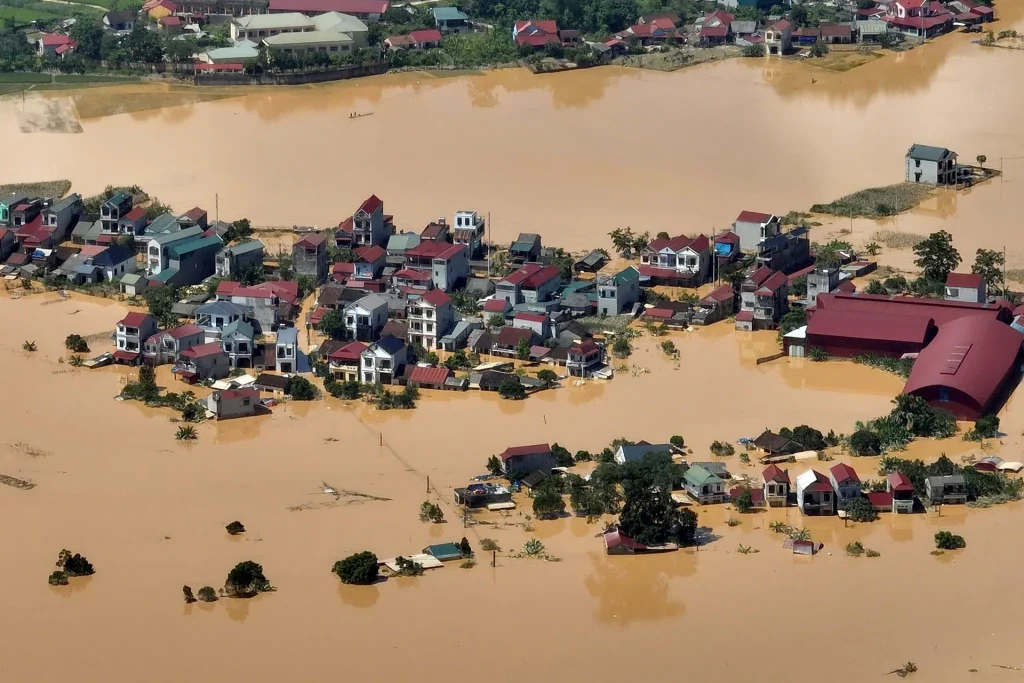WHEN Typhoon Yagi struck in 2024, it swept across Cambodia, Laos, the Philippines, Myanmar, Thailand, and Vietnam – impacting more than 7.5 million people. The storm caused widespread displacement, destroyed homes and croplands, and disrupted livelihoods, with women and children bearing the brunt of the impact.
Across Indonesia, volcanic eruptions, floods, and landslides continue to wreak havoc, particularly in informal settlements in hazard-prone urban areas. According to the International Disaster Database, 146 million people in Asean were affected by climate events in 2024 – an increase of 15 million from the previous year and 11 per cent above the five-year average. South-east Asia is one of the most disaster-prone regions in the world.
This August, Singapore hosted the Strategic Policy Dialogue on Disaster Management (SPDDM), rallying governments, the United Nations (UN), the corporate sector, as well as development and humanitarian actors from civil society around strengthening disaster management in South-east Asia.
Held in the country for the 10th consecutive year, the SPDDM helps set the agenda on how Asean advances policy partnerships and crisis readiness mechanisms to respond to the ever-imminent risk of large-scale disasters in the region.
The event, which this year focused on Asean’s 2045 vision for disaster management, could not have been timelier: When disasters strike in South-east Asia, the first responders are no longer international agencies – they are national governments, local communities, and, increasingly, Asean. This shift toward local leadership is a transformation that is charting a new direction in humanitarian action.
In February 2025, the UN Emergency Relief Coordinator, Tom Fletcher, announced a “humanitarian reset”. In simple terms, it means shifting power and resources closer to those directly affected by crises. This bold but necessary idea involves giving more control to local and national humanitarian actors, empowering frontline agencies and affected communities, and decentralising decision-making.
BT in your inbox

Start and end each day with the latest news stories and analyses delivered straight to your inbox.
The scale and frequency of disasters in South-east Asia is different from the rest of the world. Climate change, urbanisation, and conflict, especially in Myanmar, are compounding the risks. But Asean is not standing still. It is building a regional humanitarian system that is more responsive, and rooted in local leadership, supported by international partners, including the UN, all working in close partnership.
Climate-related disasters are escalating risks in the Asean region. While Singapore itself is a high-income country with a low risk of disasters, its susceptibility to climate change and lack of natural resources means that it shares several characteristics with poorer island nations of the Pacific.
Setting standards
With a sophisticated national disaster response architecture, Singapore has a role to set standards and offer lessons to the rest of Asean and the world. The UN’s Office for the Coordination of Humanitarian Affairs (Unocha), its lead agency for crisis response, is partnering with Singapore’s Changi Regional Humanitarian Assistance and Disaster Relief Coordination Centre to improve civil-military coordination.
SEE ALSO

The military offers high-value logistical and technological support in disaster relief situations, and setting common grounds of understanding on how to bring together the military and civilian components in humanitarian action is key.
Beyond reactive aid, these crises demand anticipatory action, regional coordination, and empowered local leadership. Asean is showing the way through nationally led efforts. Across Asean, the regional disaster response system, coordinated by the Asean Coordinating Centre for Humanitarian Assistance, is growing stronger. The partnership between the region and the UN is evolving. The focus has shifted from direct international aid to technical cooperation and capacity building in multi-year efforts – a model where global actors support, rather than lead.
This partnership is built on complementary strengths. Asean brings proximity, legitimacy and rapid access to affected member states. Unocha’s contribution includes financing tools that can be channelled to local non-governmental organisations, structured links to the broader UN system, and the ability to deploy global disaster mechanisms. In conflict contexts, Unocha engages all parties to advocate for humanitarian space and ensure that civilians are reached, regardless of who controls the territory.
This is the “Humanitarian Reset” in practice. It recognises that local leadership is a present reality. It reflects a broader shift towards a humanitarian system that is more politically aware, operationally realistic, and ethically grounded – one that recognises the growing capacity of regional institutions and national governments, while ensuring that the UN remains a principled and agile partner.
What matters now is how global forces unlock that potential, by supporting local systems and facilitating both financial and human capital to further strengthen foundations that are already in place.
The writer is head of office, Unocha Indonesia and Asean Liaison Office


